10 books you should read to prepare for the VR revolution
A VR reading list from techradar

10 best VR books
You could make a cogent argument that the concept of a simulated reality has been in existence in the human psyche since we began to dream, and when we began to explore our imaginations and record it in text, plays and songs a world that exists outside our own was never far away.
But Virtual Reality - a constructed world generated by computer that we can live or play within - feels like a specific subset of this, and as we prepare for the second coming of VR in our own reality, there are plenty of films to watch and books to read that should leave us champing at the bit for whatever comes next.
From the prescient Snowcrash by the inimitable Neal Stephenson, via the cyberpunk brilliance of William Gibson's Neuromancer and with a relevant nod to the feelies in Aldous Huxley's astonishing seminal Brave New World written back in 1931, we've picked out the books and stories you should read to prepare for a VR revolution.
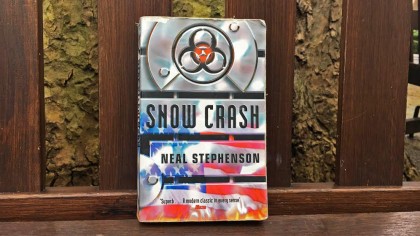
Snowcrash
Written in 1992 Neal Stephenson's breakthrough novel, Snowcrash, is one of the greatest science fiction novels of all time, and it is the book's VR Metaverse which serves as the beating heart of this fictional world.
The Metaverse is also probably the most coherently recognisable virtual world in fiction - touching on a number of familiar tropes. It's a virtual world that welcomes (almost) all, allowing people to create avatars that do not necessarily reflect the way they look, but also bringing a series of physical laws that limit the way that people can act.
There are obsessives who live solely in this virtual world and it is built around a single street that loops around a perfect black sphere. Property is bought and sold and a monorail runs around the loop stopping every 256 kilometres.
Buy Snowcrash by Neal Stephenson
Also read by Stephenson: REAMDE
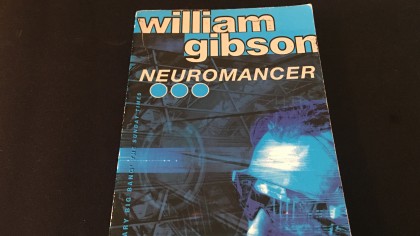
Neuromancer
William Gibson's Neuromancer is another with a valid claim to be one of the most influential science fiction books of all time, with this cyberpunk classic using its virtual reality as the way in which console cowboys enter cyberspace or 'the Matrix'. Gibson's worlds mix hacking with virtual environments and there are augmented reality notes in there as well.
Throw in battling artificial intelligences, ROM-saved consciousness copies of now-dead people and one of the most fascinatingly complex heroes in modern fiction and you have a must-have read for those looking to what comes next.
Buy Neuromancer by William Gibson
Also read by Gibson: Johnny Mnemonic (short story in Burning Chrome), Count Zero, Mona Lisa Overdrive. The Peripheral
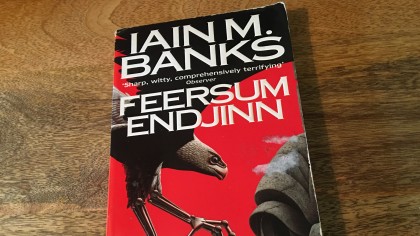
Feersum Endjin
Iain M Banks was best known for his truly wonderful Culture series of books, but Feersum Endjinn is perhaps one of the most interesting takes on the far flung consequences of virtual worlds and simulated realities.
Taking place in a crumbling medieval castle in the very distant future of the human race, uploading a mind into the 'Crypt' (a global computer network) and reincarnating is commonplace, if limited. Much of humanity has left the planet, but it is drifting into a molecular cloud which will block out the sun and end life on the planet, and the story follows four characters as the secret of the Feersum Endjin and its existence are explored.
Buy Feersum Endjinn by Iain M Banks
Also read by Banks: Consider Phlebas (and the rest of the Culture series) Against a Dark Background, The Algebraist
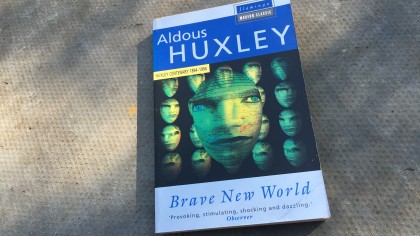
Brave New World
"How beauteous mankind is! O brave new world, That has such people in't."
Rightly held up as one of the greatest novels of the 20th century and a pivotal book in science fiction, Huxley's Brave New World existed in a future world that was a clever dystopia that looks perfect on the surface.
Entertainment in this glistening, polished sterile world was in the form of 'feelies' which were stories that not only engaged sight and sound but also touch. Which is pretty much the epitome of a virtual reality.
Not only is Huxley's Brave New World a must-read to any sci-fi fan, but the world he creates would definitely be one of the places you'd want to visit in VR.
Buy Brave New World by Aldous Huxley
Also read by Huxley: Island, The Doors of Perception and (essay) Brave New World Revisited
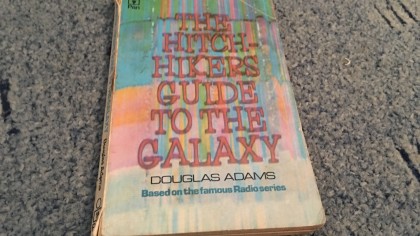
Hitchhiker's Guide to the Galaxy
Douglas Adams' Hitchhiker's Guide to the Galaxy opens with a man deciding to lay in front of a digger, and remains one of the most brilliantly written comedic novels of all time. Yet the sci-fi ideas within Hitchhikers are also sublime, and virtual worlds are a big part of some of the plot.
When the Earth is destroyed, a virtual simulation of the Earth is created to finish the mice/highly intelligent pan-galactic beings' calculation, and when Zaphod Beeblebrox steps into the Vortex he comes out entirely unscathed because he actually enters in a virtual world created around him.
And yes, trying to explain any plot point in HGTTG is utterly pointless. Go read it, and remember - don't panic.
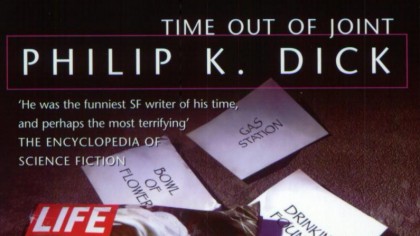
Time out of Joint
Another major trope in Sci-Fi VR novels and films is the classic question: Are we actually in a constructed world? Philip K. Dick's Time out of Joint tells the story of a man who lives in an idyllic 50s town who slowly comes to realise he is living in a constructed world that protects him from the proof.
And if you think that sounds like the Truman Show or the Matrix then you are coming to realise how much sci-fi borrowing goes on.
Buy Time out of Joint by Philip K. Dick
Also read by Dick: The Man in the High Castle, Ubik, Valis, A Scanner Darkly, Do Androids Dream of Electric Sheep.
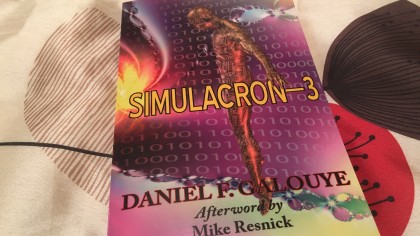
Simulacron-3
This 1964 tome by New Orleans' writer Daniel F. Galouye is an important early VR novel, and has a couple of films that owe it a great debt, including cult hit The Thirteenth Floor. Simulacron-3 is a VR world set up by a scientist in order to not have to bother with opinion polls - we kid you not.
That world is so realistic that the simulations within develop consciousness, as one of them starts to work out that the world he lives in might only exist in a computer. Which is obviously very close to the previous entry.
Galouye is one of the least famous authors on this list - but has picked up an award as an author that should be rediscovered by modern audiences in the last decade.
Also read by Galouye: Dark Universe
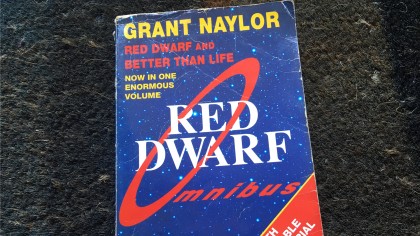
Better than Life
One of the left-field choices in the list, Red Dwarf nonetheless deserves a placement in our list. The Rob Grant/Doug Naylor book contains one of the most brilliantly realised comedic looks at VR and what it says about us.
For the hero Lister, VR heaven is an idyllic 'It's a Wonderful Life' world where humanity and empathy rule; for Rimmer it is gloss and money and power - something that he manages to corrupt utterly and make himself thoroughly unhappy.
Grant and Naylor went their separate ways after Better than Life, the second in the book series, but both wrote separate sequels.
Buy Red Dwarf Omnibus by Doug Naylor
Also read: Backwards, Last human
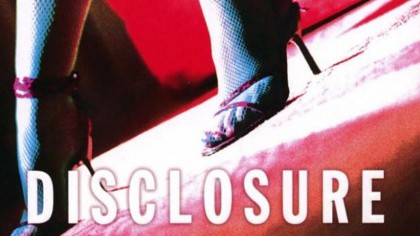
Disclosure
Michael Crichton is the author behind Jurassic World and the director of Westworld, the first being a world we'd love to visit in VR (and probably will), and the second a theme-park set future horror that actually has huge shades of virtual world issues running through it.
But it is one of his non-sci-fi worlds that most closely plays with VR. Disclosure is a real-world high-tech thriller around sexual discrimination (adapted into a film starring Michael Douglas and Demi Moore).
That high-tech company makes VR, which is an important plot point - but it's perhaps most interesting as a look into the first VR world and the hype that arrived with the first wave of the tech.
Buy Disclosure by Michael Crichton
Also ready by Crichton: Jurassic Park
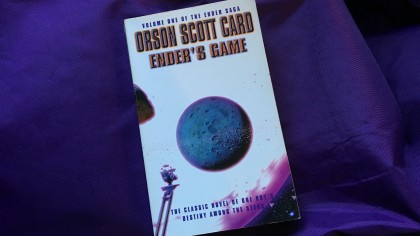
Ender's Game
Orson Scott Card's high-profile proclamations have rightly caused huge controversy, but there's no doubting his talent, and his Enders series are rightful classics.
The first of the series, Ender's Game, is perhaps his most famous book, although the sequel Speaker for the Dead is arguably far better. It is the former that has the VR world, however.
The VR 'games' Ender plays are fascinating in themselves, but it is perhaps the juncture of play versus reality that shine through, whether it is the way in which he is being analysed through his performance and actions - or the blurring of what is real and what is happening in a fantasy world.
Buy Ender's Game by Orson Scott Card
Also read by Scott Card: Speaker for the Dead.

Patrick Goss is the ex-Editor in Chief of TechRadar. Patrick was a passionate and experienced journalist, and he has been lucky enough to work on some of the finest online properties on the planet, building audiences everywhere and establishing himself at the forefront of digital content. After a long stint as the boss at TechRadar, Patrick has now moved on to a role with Apple, where he is the Managing Editor for the App Store in the UK.